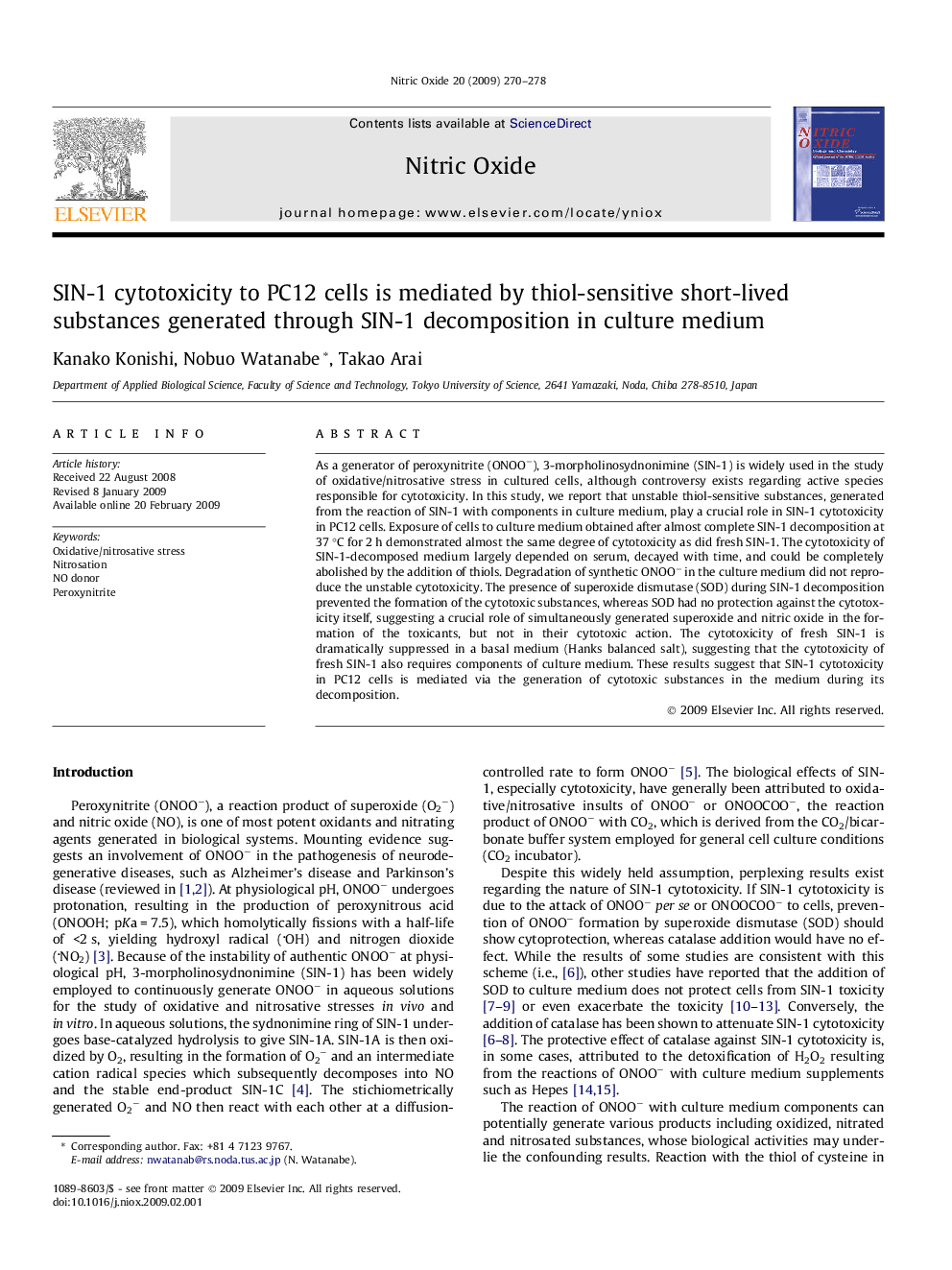| Article ID | Journal | Published Year | Pages | File Type |
|---|---|---|---|---|
| 2001941 | Nitric Oxide | 2009 | 9 Pages |
Abstract
As a generator of peroxynitrite (ONOOâ), 3-morpholinosydnonimine (SIN-1) is widely used in the study of oxidative/nitrosative stress in cultured cells, although controversy exists regarding active species responsible for cytotoxicity. In this study, we report that unstable thiol-sensitive substances, generated from the reaction of SIN-1 with components in culture medium, play a crucial role in SIN-1 cytotoxicity in PC12 cells. Exposure of cells to culture medium obtained after almost complete SIN-1 decomposition at 37 °C for 2 h demonstrated almost the same degree of cytotoxicity as did fresh SIN-1. The cytotoxicity of SIN-1-decomposed medium largely depended on serum, decayed with time, and could be completely abolished by the addition of thiols. Degradation of synthetic ONOOâ in the culture medium did not reproduce the unstable cytotoxicity. The presence of superoxide dismutase (SOD) during SIN-1 decomposition prevented the formation of the cytotoxic substances, whereas SOD had no protection against the cytotoxicity itself, suggesting a crucial role of simultaneously generated superoxide and nitric oxide in the formation of the toxicants, but not in their cytotoxic action. The cytotoxicity of fresh SIN-1 is dramatically suppressed in a basal medium (Hanks balanced salt), suggesting that the cytotoxicity of fresh SIN-1 also requires components of culture medium. These results suggest that SIN-1 cytotoxicity in PC12 cells is mediated via the generation of cytotoxic substances in the medium during its decomposition.
Related Topics
Life Sciences
Biochemistry, Genetics and Molecular Biology
Biochemistry
Authors
Kanako Konishi, Nobuo Watanabe, Takao Arai,
